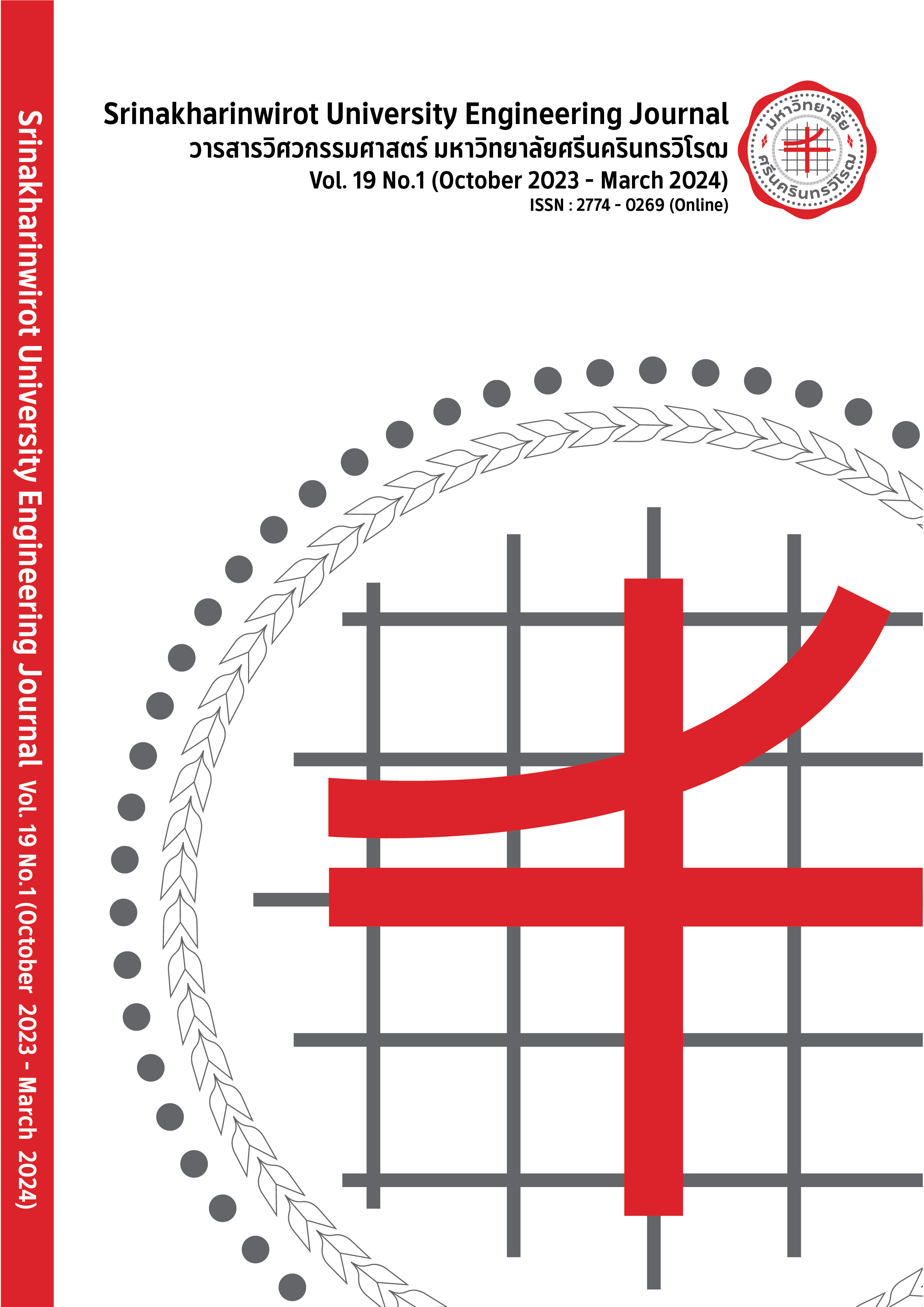Predictive Modeling of Non-Communicable Diseases Using Social Determinants of Health as Features: A Review of Existing Approaches
Main Article Content
Abstract
The paper presents a comprehensive review of the current state of predictive models for non-communicable diseases (NCDs) prevalence, specifically focusing on utilising social determinants of health (SDHs) as features for model training. The review's search strategy employed a thorough screening process to select sixteen studies for inclusion. These studies used supervised, unsupervised, and other algorithms to forecast NCDs' burden; the most frequently applied attributes were age, gender, Fasting Blood Sugar (FBS), physical inactivity, obesity, and smoking. The evaluation methods for the models included a range of metrics, such as Percent Accuracy, Receiver Operating Characteristic (ROC), and Hamming loss. The review concludes that predictive models have the potential to forecast NCD prevalence accurately and highlights the need for further research that focuses on incorporating SDH-related factors as features for model training.
Article Details

This work is licensed under a Creative Commons Attribution-NonCommercial-NoDerivatives 4.0 International License.
Copyright belongs to Srinakharinwirot University Engineering Journal
References
World Health Organization (2022). Non communicable diseases, World Health Organization [online]. Available: https://www.who.int/news-room/fact-sheets/detail/noncommunicable-diseases
World Health Organization (2019). Social Determinants of Health, World Health Organization. Available: https://www.who.int/health-topics/social-determinants-of-health
P. Braveman, S. Egerter and D.R. Williams, “The Social Determinants of Health: Coming of age”, Annual Review of Public Health, vol. 32, no. 1, pp. 381–398, 2011.
L. Vallejo-Torres and S. Morris, “The contribution of smoking and obesity to income-related inequalities in health in England”, Social Science & Medicine, vol. 71, no. 6, pp. 1189–1198, 2010.
S. Stringhini, C. Carmeli, M. Jokela, M, Avendaño, P. Muennig, F. Guida et al., “Socioeconomic status and the 25 × 25 risk factors as determinants of premature mortality: A multicohort study and meta-analysis of 1·7 million men and women”, The Lancet, vol. 389, no. 10075, pp. 1229–1237, 2017.
A.R. Hosseinpoor, N. Bergen, S. Mendis, S. Harper, E. Verdes, A. Kunst and S. Chatterji, “Socioeconomic inequality in the prevalence of noncommunicable diseases in low- and middle-income countries: Results from the World Health Survey”, BMC Public Health, vol.12, article number 474, 2012.
F. Ngom, I. Fall, M. S. Camara and A. Bah, "A study on predicting and diagnosing non-communicable diseases: case of cardiovascular diseases," in International Conference on Intelligent Systems and Computer Vision (ISCV), Fez, Morocco, 2020, pp. 1-8.
B. Keerthi Samhitha, M.R. Sarika Priya, C. Sanjana, S.C. Mana and J. Jose, "Improving the Accuracy in Prediction of Heart Disease using Machine Learning Algorithms," in International Conference on Communication and Signal Processing (ICCSP), Chennai, India, 2020, pp. 1326-1330.
N. Mohan, V. Jain and G. Agrawal, "Heart Disease Prediction Using Supervised Machine Learning Algorithms," in 5th International Conference on Information Systems and Computer Networks (ISCON), Mathura, India, 2021, pp. 1-3.
M. Hu, Y. Nohara, Y. Wakata, A. Ahmed, N. Nakashima and M. Nakamura, “Machine learning based prediction of non-communicable diseases to improving intervention program in Bangladesh”, European Journal for Biomedical Informatics, vol.14, no.4, 2018.
Z. Hu, H. Qiu, Z. Su, M. Shen and Z. Chen, "A Stacking Ensemble Model to Predict Daily Number of Hospital Admissions for Cardiovascular Diseases," IEEE Access, vol. 8, pp. 138719-138729, 2020.
M. A. N. Banu and B. Gomathy, "Disease Forecasting System Using Data Mining Methods," in International Conference on Intelligent Computing Applications, Coimbatore, India, 2014, pp. 130-133.
W. Sangkatip and J. Phuboon-Ob, "Non-Communicable Diseases Classification using Multi-Label Learning Techniques," in 5th International Conference on Information Technology (InCIT), Chonburi, Thailand, 2020, pp. 17-21.
K. Davagdorj, J. -W. Bae, V. -H. Pham, N. Theera-Umpon and K. H. Ryu, "Explainable Artificial Intelligence Based Framework for Non-Communicable Diseases Prediction," IEEE Access, vol. 9, pp. 123672-123688, 2021.
N. George and J. Thomas, "Forecasting the Peak Demand Days of Chronic Respiratory Diseases with Fuzzy Logic," in International Conference on Circuits and Systems in Digital Enterprise Technology (ICCSDET), Kottayam, India, 2018, pp. 1-5.
K. Hastings, C. Marquina, J. Morton, D. Abushanab, D. Berkovic, S. Talic, E. Zomer , D. Liew, Z. Ademi, “Projected new-onset cardiovascular disease by Socioeconomic Group in Australia”, Pharmacoeconomics, vol.40, no.4, pp. 449–460, 2022.
Y. Wang and J. Wang, “Modelling and prediction of Global Non-communicable diseases”, BMC Public Health, vol.20, no.1, 2020.
M. A. Alim, S. Habib, Y. Farooq and A. Rafay, "Robust Heart Disease Prediction: A Novel Approach based on Significant Feature and Ensemble learning Model," in 3rd International Conference on Computing, Mathematics and Engineering Technologies (iCoMET), Sukkur, Pakistan, 2020, pp. 1-5.
K. Davagdorj, J. -W. Bae, V. -H. Pham, N. Theera-Umpon and K. H. Ryu, "Explainable Artificial Intelligence Based Framework for Non-Communicable Diseases Prediction," IEEE Access, vol. 9, pp. 123672-123688, 2021.
R. Ferdousi, M. A. Hossain and A. E. Saddik, "Early-Stage Risk Prediction of Non-Communicable Disease Using Machine Learning in Health CPS," IEEE Access, vol. 9, pp. 96823-96837, 2021.
S. Islam, N. Jahan and M. E. Khatun, "Cardiovascular Disease Forecast using Machine Learning Paradigms," in Fourth International Conference on Computing Methodologies and Communication (ICCMC), Erode, India, 2020, pp. 487-490.
M. Marmot and R. Bell, “Social Determinants and non-communicable diseases: Time for Integrated Action”, thebmj, BMJ 2019; 364:l251.


